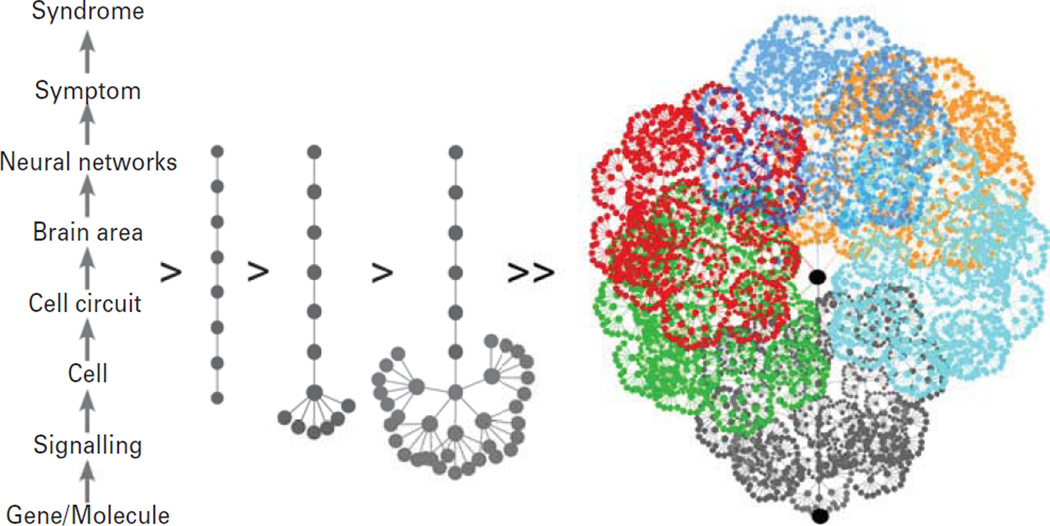Fig. 3.
Complex biological pathways from gene to syndrome. In a linear gene-to-disease pathway (left), single genes code for syndromes in direct step-by-step upward trajectory, across all biological scales. However, in reality the biological complexity greatly increases with each higher scale. From the bottom-up, genes have multiple functions and coalesce in signalling pathways and structural entities in various combinations across cell types (left-to-right arrows). Cells assemble in local circuits, which are re-used, modified and repeated across brain regions. In turn, assemblies of these biological modules form the functional bases of brain areas and neural networks. The result is a massively interlinked and multi-scale network, whose output contributes to the expression of symptom dimensions, including mood, cognition and physiological changes in major depression (illustrated as various shades of colour). This redundancy in the use of genes and biological modules, combined with their putative distal impact on neural networks and putative symptom dimensions represents a core challenge in research on complex heterogeneous neuropsychiatric disorders, in which dominant roles of genes are rare and ambiguous, compared to neurodegenerative or peripheral organ diseases.

